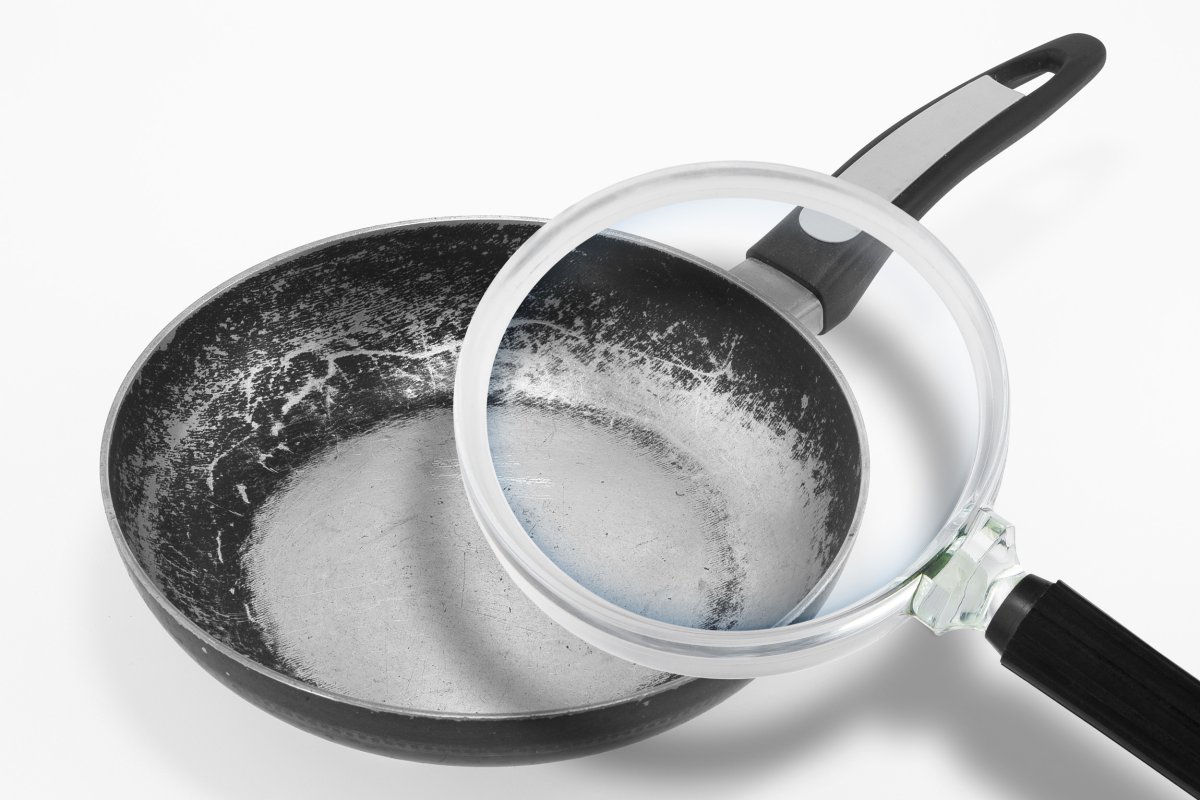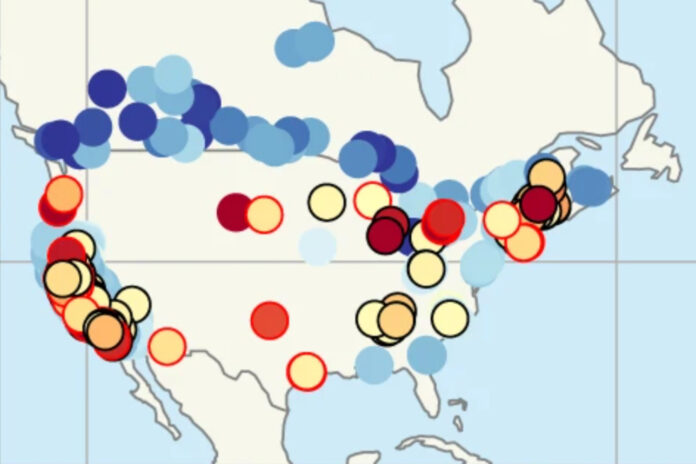Certain areas of the U.S. and other countries are hot spots of “forever chemicals,” a study has found.
A “substantial fraction” of locations have above-recommended levels of chemicals called PFAS (per- and polyfluoroalkyl substances) in water samples, according to a paper published in the journal Nature Geoscience.
Many of these hot spots have concentrations of PFAS at much higher levels than is considered safe, the researchers said.
PFAS are chemicals used to make products resistant to heat, oil, stains, grease and water. This means they are present in numerous household items, including nonstick cooking tools, toilet paper, food packaging, cosmetics and dental floss.
The U.S. Agency for Toxic Substances and Disease Registry has identified these “forever chemicals” as potential causes of health problems like increased cholesterol and blood pressure, diminished immune function, reproductive problems and a heightened risk of certain cancers.
Denis O’Carroll/Nature Geoscience/ISTOCK/GETTY IMAGES PLUS
The researchers investigated data from over 12,000 surface water and 33,900 groundwater samples collected worldwide. They found that 69 percent contained more PFAS than allowed by Canada’s minimum standard of 30 nanograms per liter and that 6 percent surpassed the European Union’s standard of 100 ng per liter.
“Many of our source waters are above PFAS regulatory limits,” said study author Denis O’Carroll, a professor at Australia’s University of New South Wales, in a statement. “We’re talking above five percent, and it goes over 50 percent in some cases.”
The paper also reveals that the U.S. is home to several PFAS hot spots where levels of the chemicals are over the EU’s drinking water limit. These hot spots, seen in a map produced by the researchers (above), are located around the country but particularly in New England, the Midwest and on the West Coast. Other areas where PFAS are found in high concentrations are Europe, China and Australia.
Maaike van Gerwen, director of research for the Department of Otolaryngology at the Icahn School of Medicine at Mount Sinai, told Newsweek: “PFAS are chemicals that have been produced since the 1940s and are used in a variety of industry and consumer products, including nonstick cookware, stain-resistant fabric and firefighting foam.”
She said the first PFAS chemicals that were produced were PFOA (perfluorooctanoic acid) and PFOS (perfluorooctane sulfonate).
“In the early 2000s, major American chemical companies voluntarily agreed to eliminate the production of PFOA- and PFOA-related chemicals,” she continued. “This does not mean that the production of PFAS declined. On the contrary, multiple new PFAS chemicals were developed and are still being manufactured.”
PFAS are nicknamed “forever chemicals” because of their slow degradation rate and have been detected in soils, oceans and waterways globally. A 2023 study by the U.S. Geological Survey showed that nearly half of U.S. tap water contains some form of PFAS. Other studies have found that most Americans have some degree of PFAS in their blood.
However, the study noted that these findings were in regions with the most extensive testing, which might have skewed the data. With additional research, similar levels of contamination may be discovered worldwide.

ISTOCK / GETTY IMAGES PLUS
The paper’s authors wrote: “Note that, while the mapped data suggest Australia, China, Europe and North America are PFAS hotspots relative to the world, when comparing against the number of samples collected, it implies that these are high-sampling zones, potentially skewing the representation of actual distribution.”
On April 10, the Biden administration announced the first enforceable drinking water standard for PFAS in the U.S. Some PFAS will have a limit of 4 parts per trillion, while others will have a 10 parts per trillion limit.
“Drinking water contaminated with PFAS has plagued communities across this country for too long,” Environmental Protection Agency Administrator Michael Regan said in a statement. “That is why President Biden has made tackling PFAS a top priority, investing historic resources to address these harmful chemicals and protect communities nationwide.
“Our PFAS Strategic Roadmap marshals the full breadth of EPA’s authority and resources to protect people from these harmful forever chemicals,” Regan continued. “Today, I am proud to finalize this critical piece of our Roadmap, and in doing so, save thousands of lives and help ensure our children grow up healthier.”
Do you have a tip on a science story that Newsweek should be covering? Do you have a question about PFAS? Let us know via [email protected].
Uncommon Knowledge
Newsweek is committed to challenging conventional wisdom and finding connections in the search for common ground.
Newsweek is committed to challenging conventional wisdom and finding connections in the search for common ground.


